The Trust lent a group of books to Hogarth’s House in Chiswick as part of an exhibition which ran until 1 November 2015. It celebrated the award of funding from HLF towards a major project which will create an “exhibition garden” presenting 300 years of the history of the site of Hogarth’s House. The exhibition told the story of that garden, setting it in the context of garden history in 18th and 19th century Chiswick and the pull up information panels from the exhibition can be borrowed for display elsewhere, though the books are not available for such displays!
Books on gardening were a relatively new genre from the 17th century and were popular as gardening became fashionable at this time. Layton’s collection includes important gardening books, suggesting that he was well advised in his purchases. They are listed below.
 Systema agriculturae : the mystery of husbandry discovered, by John Worlidge, 3rd edition, 1681, printed for Thomas Dring, at the corner of Chancery Lane in Fleet Street
Systema agriculturae : the mystery of husbandry discovered, by John Worlidge, 3rd edition, 1681, printed for Thomas Dring, at the corner of Chancery Lane in Fleet Street
The book describes every kind of farming and gardening in England and the author explained the pictorial frontispiece on great detail. G A Ruperti, the Lutheran pastor who was the first owner of Hogarth’s House, had a copy of the 1700 edition of this book in his library. In his will he asked that his books should be sold to support his family; the auction took place over 7 nights in 1732 in a Covent Garden coffee house close to Hogarth’s then home.
Hortus Kewensis or, A catalogue of the plants cultivated in the Royal Botanic Gardens at Kew, by William Aiton, Gardener to His Majesty, 1789, printed for George Nicol, bookseller to His Majesty, Pall Mall,
These 3 volumes list the royal plant collections which included most of the plants then grown in England. It has a small number of illustrations amongst which is a large folded engraving of the Strelizia flower. William Aiton (1733-1793) gave the country of origin, the person who introduced each plant to this country and when. The work was updated by his son, William Townsend Aiton, between 1810 and 1813. The author was born in Carnwath in Scotland and trained on the estate where his father was agent. He walked to London aged 22 and began working at the Chelsea Physic Garden, moving to Kew in 1759. Hogarth was a close friend of Joshua Kirby, Clerk of Works at Kew, and may have know the Aitons through him.
 The new art of gardening, with the gardner’s almanac, by Leonard Meager, printed for Henry Nelme, 1697
The new art of gardening, with the gardner’s almanac, by Leonard Meager, printed for Henry Nelme, 1697
Leonard Meager (c1624-c1704) was trained in private estate garden in Northamptonshire and later worked at the famous Brompton Park nursery. This book covers the orchard, the kitchen-garden, the flower-garden and the conservatory or greenhouse; it was reprinted a number of times until 1732. His first and most popular book, a best-seller which ran to 11 editions between 1670 and 1710, was The English Gardener or A Sure Guide to Young Planters and Gardeners, in 3 Parts.
 A sure method of improving estates; by plantations of oak, elm, ash, beech and other timber-trees coppice-woods, &c by Batty Langley, printed for Francis Clay, 1728
A sure method of improving estates; by plantations of oak, elm, ash, beech and other timber-trees coppice-woods, &c by Batty Langley, printed for Francis Clay, 1728
Born in Twickenham, Batty Langley (1696-1767) and his brother, Thomas, were trained in gardening by their father. Batty was architect, surveyor, garden contractor and landscape designer. He was one of the first to promote the new rococo style of garden design and his New Principles of Gardening (1728) offered garden plans in what he called the ‘arti-natural’ style, with serpentine paths that pre-figured Hogarth’s Line of Beauty. Langley wrote numerous builders’ manuals and ran a business supplying artificial stone ornaments. With his brother, an engraver, he ran a school of drawing and garden design in Soho in the 1740s; the brothers may well have know Hogarth as a fellow engraver.
 The flower-garden display’d, in above four hundred curious representations of the most beautiful flowers , printed for R Montagu, 1734, 2nd edition
The flower-garden display’d, in above four hundred curious representations of the most beautiful flowers , printed for R Montagu, 1734, 2nd edition
Robert Furber (1674–1756) was established as a nurseryman in Kensington by 1718. In 1731 he invited subscriptions for a set of 12 fine engravings by Henry Fletcher based upon paintings by Peter Casteels, a Flemish painter who lived in Richmond; these depicted flowers month by month from his nursery garden. The pictures were effectively a catalogue of his stock. In 1734 Richard Bradley (1688-1732) published this book, using slightly inferior copies of the prints issued by Furber; his name did not appear on the title page. In this 2nd edition he added a treatise entitled A flower garden for gentlemen and ladies. This copy carries the book plate, printed on pink paper, of “The Honble Lady Maynard Hesilrige”
 A treatise on forest-trees by William Boutcher, printed by R. Fleming Edinburgh, 1775 and sold by the author and by J Murray, 32 Fleet Street, London
A treatise on forest-trees by William Boutcher, printed by R. Fleming Edinburgh, 1775 and sold by the author and by J Murray, 32 Fleet Street, London
William Boutcher was a Scots nurseryman and son of a nurseryman. He dedicated his book to the Duke of Buccleuch and funded it by subscriptions from most of the Scottish aristocracy. In it he advised on cultivating and transplanting trees and managing hedges to be “handsomer and stronger in 5 years than they usually are in 10”. Highly regarded and based on Boutcher’s long personal experience, it was a desperate attempt to earn income to “relieve his wants”. Though Boutcher claimed to have signed each copy of his book, Layton’s copy is not signed. Suffering poor health in later life, Boutcher traded a seedsman but did not complete a planned book on fruit trees before he died in 1780.

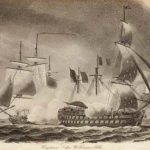


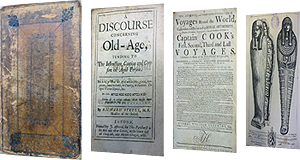
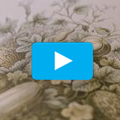
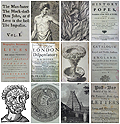


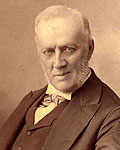 Thomas Layton
Thomas Layton  Download a walk through Victorian Brentford and discover some of Layton's legacy
Download a walk through Victorian Brentford and discover some of Layton's legacy Discover materials for teachers and students
Discover materials for teachers and students  Purchase a beautifully illustrated book by Mike Galer, called Layton's Legacy.
Purchase a beautifully illustrated book by Mike Galer, called Layton's Legacy.